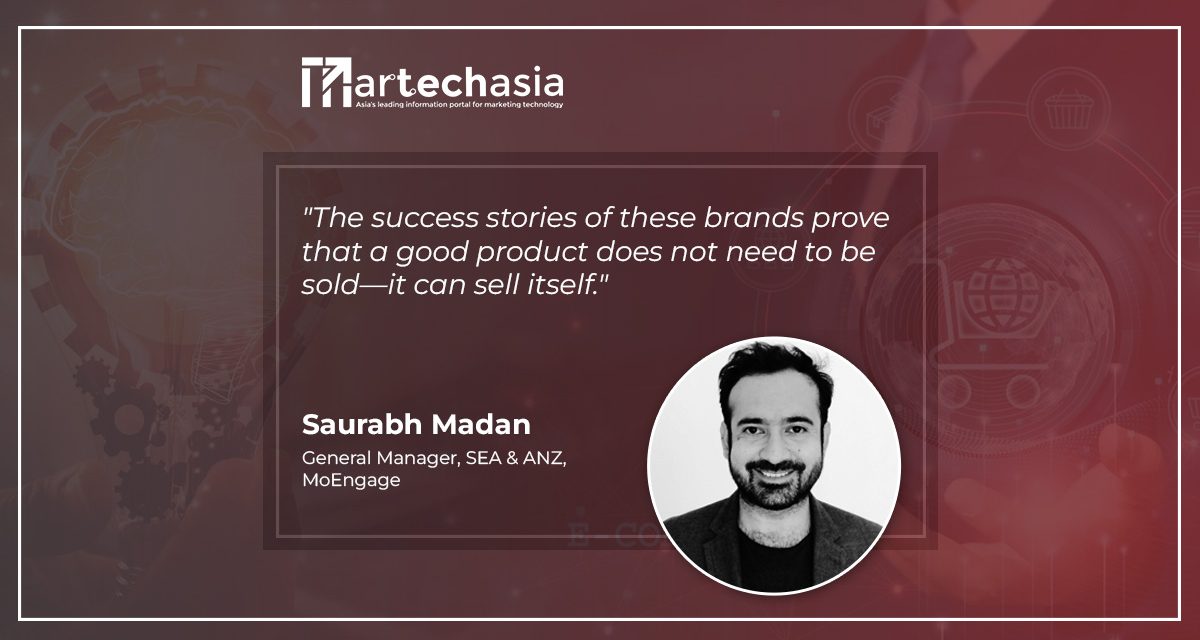Product-led growth can take a brand from zero to a million DAUs faster than any other strategy.
From Amazon to Netflix and Tesla, every consumer brand today is adopting a product-led growth approach to turbo-charge their business. The success stories of these brands prove that a good product does not need to be sold—it can sell itself. Product-led growth gives businesses of all sizes a way to use the product as the primary driver for acquisition, conversion, and retention. It allows you to sustain and enhance the growth rate by delivering exceptional customer experiences.
Standing out in a crowded marketplace
The B2C marketplace is exceptionally crowded and poses challenges in terms of scale and retention. Many products are commoditized, and customers find it easy to switch to another brand. To build and maintain a loyal customer base, you need to create a strong value proposition to yield expected results with speed. It is here that product-led growth can make the biggest impact. It allows you to stand out in a crowded marketplace by focusing on retaining customers for the long haul. Alethia Tan, Head of Growth Operations at Kredivo, a fintech startup in Indonesia, says, “This ensures differentiation and makes it easier to define the product’s target audience. Knowing your audience is critical for both acquisition and retention.”
Eliminating friction during collaboration
One of the most notable requirements for a successful growth team is a close-knit relationship between the product and marketing functions. But whenever multiple stakeholders are involved, friction is inevitable. A great way to solve this is by reducing the number of decisions to be made, especially those on a recurring basis. Companies must make veto rights transparent between product and marketing and create clear distinctions as to who owns what.
Another way to eliminate unhealthy friction between teams is to define outcome metrics, which are overarching goals of revenue, user acquisition or an improvement in user engagement. This means that KPIs need to be co-owned, and goals need to be interdependent instead of sporadic. “Aligning organisational goals to departmental goals helps to clear competencies and divide responsibilities sensibly between teams,” says Sarika Tulsyan, Chief Revenue Officer, POPS Worldwide, a digital entertainment company in Vietnam.
Chasing the right metrics
There is no definite set of metrics for product growth, unlike for other marketing and product functions. The metrics measured by one business will likely not be relevant to another one operating in a different industry. For a music streaming app, for example, audio playback time is crucial, but for a product with a long customer cycle, like a real estate app, daily engagement metrics could falsely portray a negative trend. “Tracking negative metrics is as important as tracking positive metrics,” says Niraj Bajaj, Director of Product Management at Samsung.
That said, product and growth teams often fall prey to vanity metrics (like impressions) over the ones essential for decision making. Vanity metrics fall short of indicating patterns about problems that users are trying to solve. They also fail to communicate user roadblocks or areas of improvement. They portray a rosy picture of the business, but don’t capture the substance of business growth.
Once the right metrics have been defined, teams must focus on creating a good onboarding experience. Studies have found that 60% of mobile app users uninstall an app within the first 14 days of onboarding. A deeper analysis shows that the primary reason for app uninstalls and churn is not user experience, poor customer support or other commonly assumed reasons, but product onboarding.
Creating the perfect onboarding experience
Product onboarding is any user’s first interaction with your product, and the most important, because it tests the expectations set by marketing and sales demos. The onboarding process must be attuned to user needs and convince people that the product is capable of solving their problems in the best possible manner. A good onboarding experience retains the user, making sure that there is no wastage of the resources invested in acquiring these leads.
Product onboarding is not a one-time activity but an ongoing process that needs constant refinement based on changes in user personas, expectations, new market trends, etc. Teams need to ensure that no user goes through unnecessary steps or features. The only way to ensure this is by taking a data-driven approach. You need to understand how users interact with your product when they first encounter it, what steps they take, where some of them drop off, and what causes them to stay. You need to segment your users based on their actions and send out personalised campaigns for each segment.
“While segmenting users, look at the user journey for information about where they came from or how they interact with your onboarding flow. Create a behavioural segmentation approach that divides audiences based on how they interact with your product. This yields better results because it is based on real data rather than presumptions,” says Agnes Lie, VP of Growth Marketing at OVO, Indonesia’s leading digital payments player.
Addressing retention challenges
Another key aspect of product-led growth is retention. Addressing retention begins with the motive of understanding why users walk into your proverbial store. Be it online or offline, the aspects that drive loyalty and thereby retention should be built into the product design. This requires product growth teams to think about the user journey, highlighting any junctures that might have the possibility of churn.
“You need to build and customise user journeys because customer desires will keep changing at every stage. Designing a clear path helps users address different segments of users differently, and building a journey specifically for them ensures the stickiness of your product,” says Vineeth Kallarakkal, Head of Marketing at The Asian Parent, a community platform for parents, based in Singapore. Here’s where a customer engagement platform such as MoEngage comes in handy—it allows you to disseminate all the information a business collects about its customers and pieces it together so you can create meaningful engagement campaigns.



















